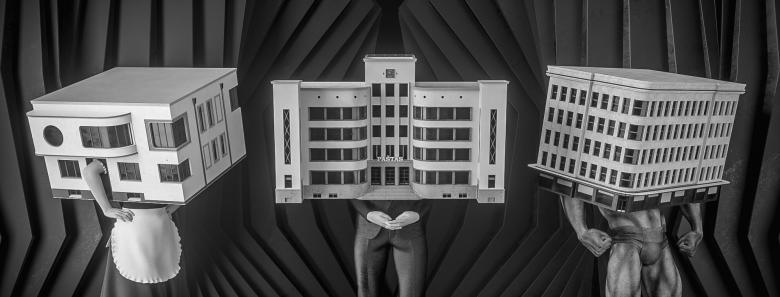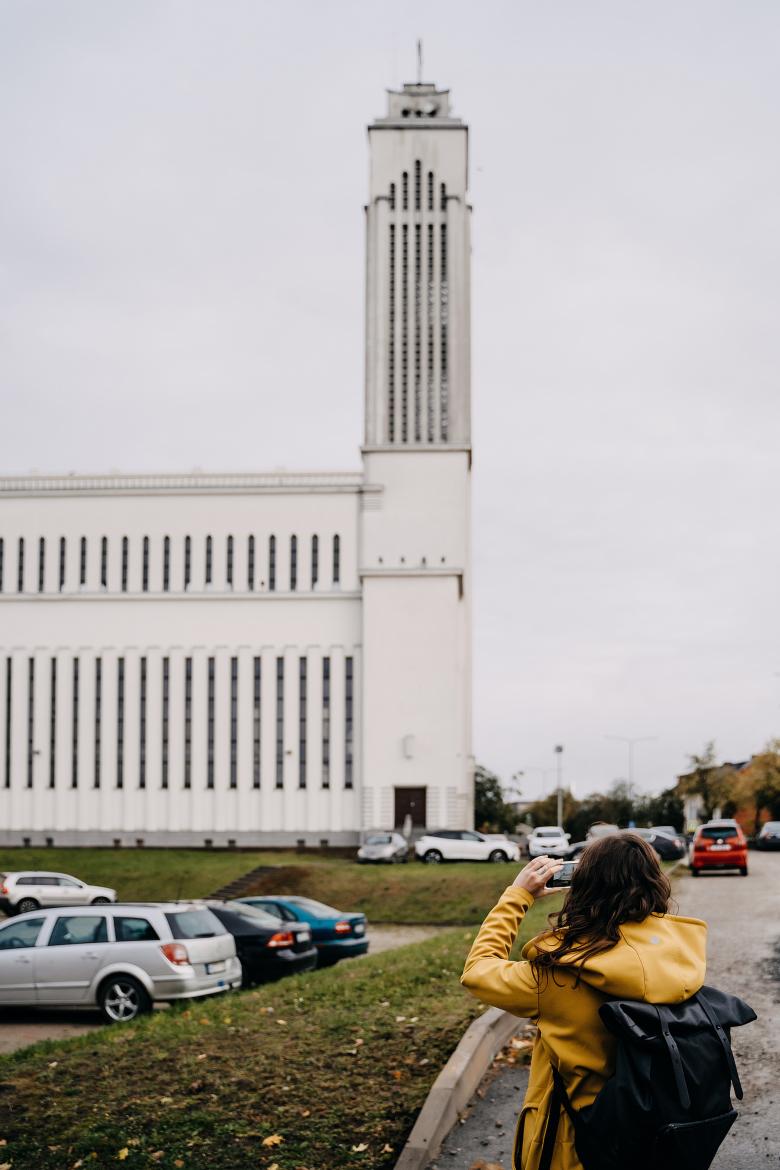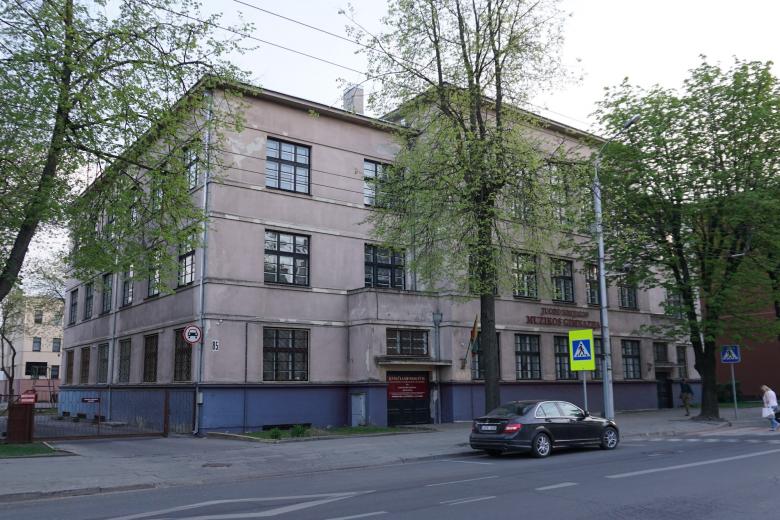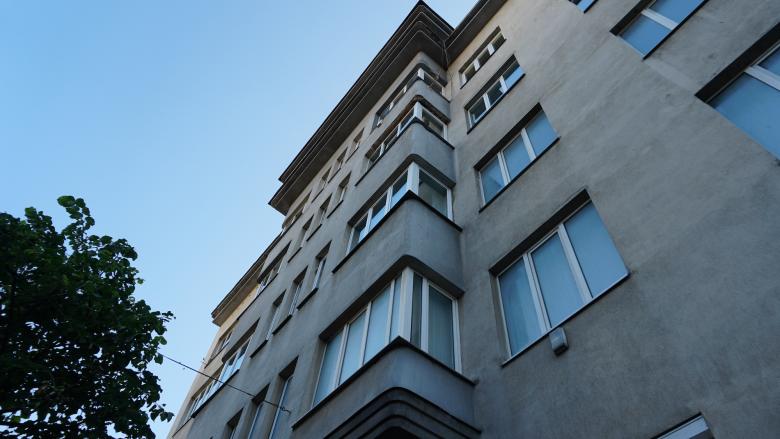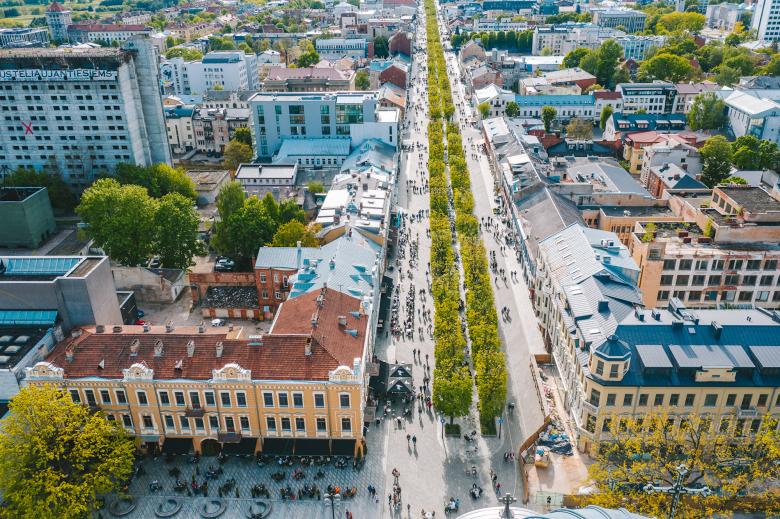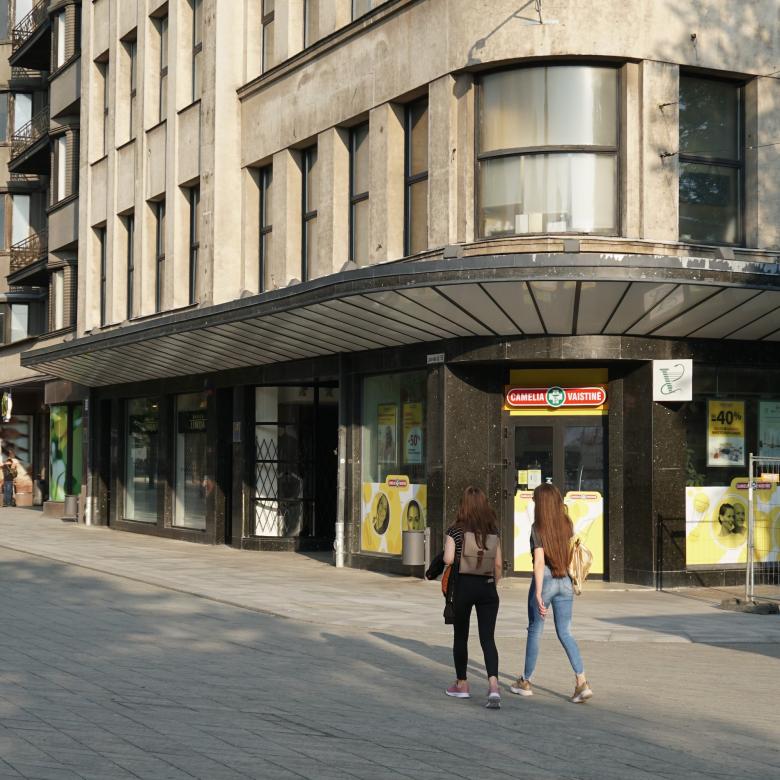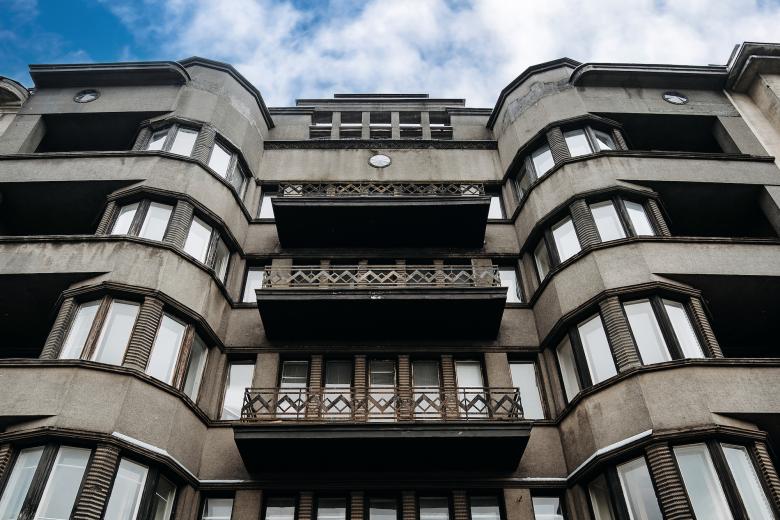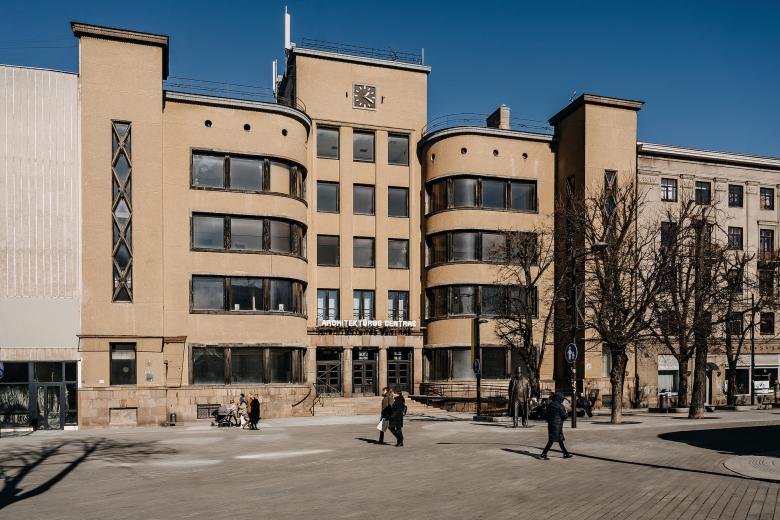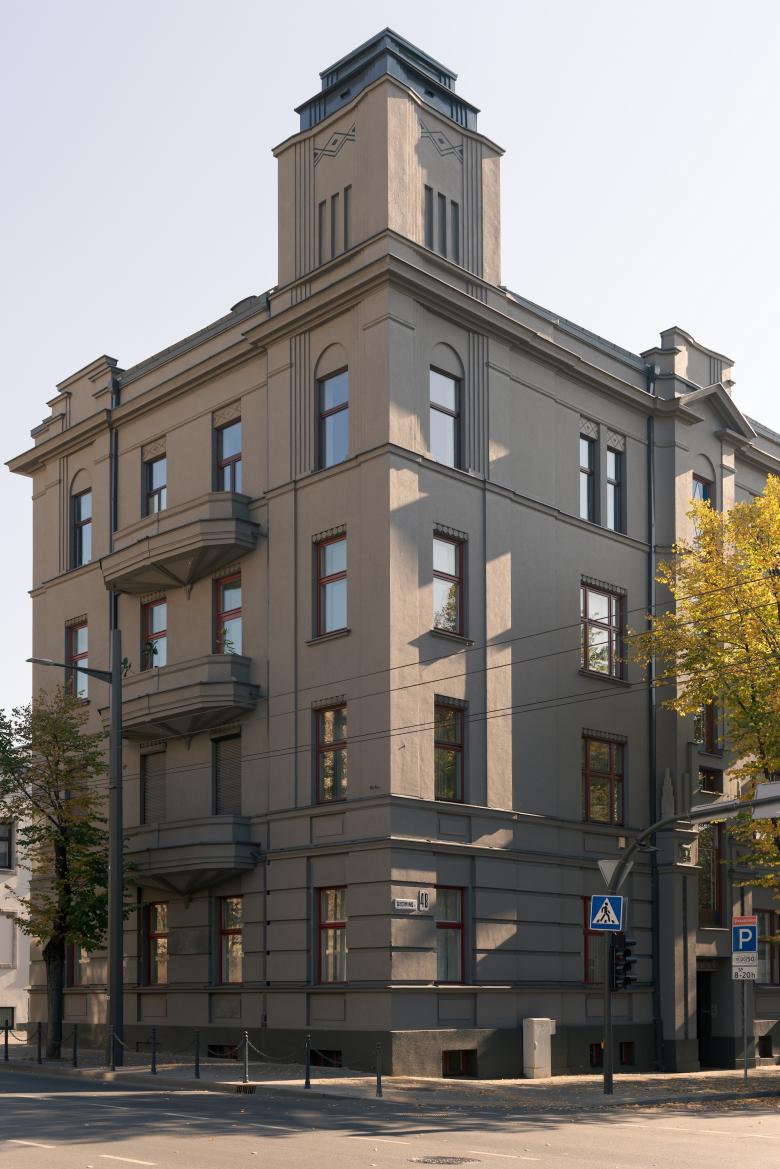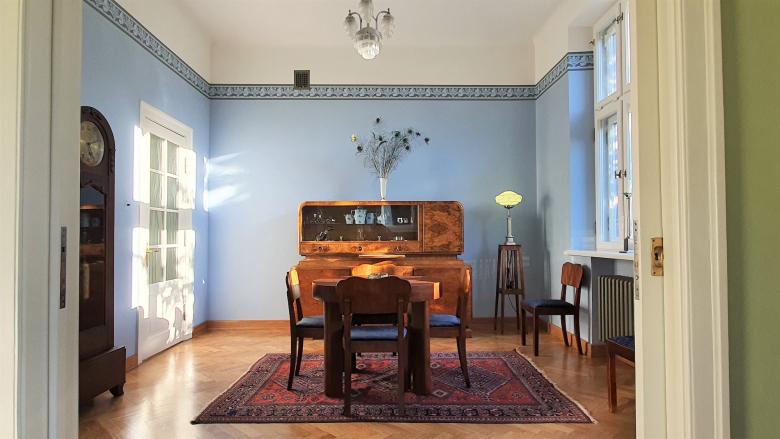The Capital of Baltic Modernism
Ulf Meyer
11. August 2022
Photo: Aideen Barry
With Kaunas as the European Capital of Culture in 2022, the Lithuanian city is rediscovering its heritage of modern architecture, particularly the two interwar decades when the country's second city served as its capital.
The architecture of the interwar period is one of the best reasons to visit Kaunas, Lithuania. When Lithuania’s second city became the nation’s provisional capital in 1919, replacing Vilnius after it fell under Polish control, it was just a flat, provincial Russian town. Overnight it turned into a European capital — with a lot of help from modern architecture. Public and private buildings, including a parliament, embassies, and a national bank, but also offices, schools, and residences, were built quickly and by the thousands; about half of them are still around today. As Kaunas serves as the European Capital of Culture this year, the city is rediscovering its historical — and in turn architectural — legacy.
The interwar period (1919-39) was most important for Kaunas: its booming “golden age,” when Lithuania’s best architects, such as Edmundas Frykas and Vytautas Landsbergis, left their mark on the city. Foreign architects were also active in the new capital, bringing German and Russian influences with them, such as with the avant-garde State Printing House designed by Henrik Fischer. Because some Lithuanian architects had studied architecture abroad, Italian, Latvian and Belgian touches can also be seen mixing with vernacular and “National” patterns such as “Baltic folk” and the local version of Neo-Baroque, evident in, for example, the State Theater redesigned by Landsbergis in 1930.
Modernist buildings were built into the existing city fabric, often replacing two-story wooden buildings with five story buildings made of masonry and concrete. The term modernist architecture is used to describe Kaunas’s 1930s-style building, but there were really several trends going on simultaneously: functionalism as demonstrated by the Bauhaus, but also Streamline Moderne, Art Deco, and Russian Constructivism.
Christ’s Resurrection Church (1933–1940) by Karolis Reisonas. (Photo: Martynas Plepys)
Situated on the “Green Hill” above the city center, the monumental Christ’s Resurrection Church was designed by the city architect, Karolis Reisonas, with a glistening white tower that cannot be overlooked in Kauna’s panorama. During Hitler’s and Stalin’s reign over Lithuania, the church was confiscated and used for paper storage and as a radio factory. Only in 1990 was it returned to the Catholic church. The all-white ferroconcrete three-nave hall can seat 5,000 worshippers during high holidays.
The concentration of modern buildings in Kaunas’s gridded New Town district is so unique that Lithuania applied for it to become a UNESCO World Heritage Site (it is awaiting approval). In 2014 the European Commission awarded 44 buildings from the two-decade interwar period the European Heritage Label. The architectural patrimony is the only Lithuanian site on this list. Even though modernism is an important part of the city’s identity and heritage, some of these buildings are abandoned and/or in poor condition.
Jewish Exact Sciences Gymnasium (1931) by Boruchas Klingas. (Photo: Žilvinas Rinkšelis)
Supported by American philanthropist Edward Max Chase, the Jewish Exact Sciences Gymnasium was designed by Boruchas Klingas. Also housing a book shop, a doctor’s office, and a kindergarten, the high school had the most ascetic aesthetics of any modern building in Kaunas. Today, it is used as a music school, because the Jewish community of Kaunas continues shrinking.
Chaimson House (1930–1931) by Vytautas Landsbergis. (Photo: Žilvinas Rinkšelis)
Although the plaster is peeling off the house that Landsbergis designed in 1930 for Mose Chaimson, the head of Kaunas’s textile warehouse, its no-nonsense style still impresses today. The wide bay with glass corners, the strong sense of symmetry, and the fact it had an elevator made it Kaunas’s most advanced residential building when it was erected. The neighbor of the Chaimson family at the time was the famed Jugendstil painter Mstislavas Dobužinkis.
Liberty Boulevard lined with Linden trees. (Photo: Andrius Aleksandravičius)
Most buildings can be found along V. Putvinskio Street (Embassy Street) and the parallel Laisvės Alėja (Liberty Boulevard), the main east-west schlepp of Kaunas. Here, the Headquarters of the Pieno Centras Milk Processing Company, designed by Vytautas Landsbergis in 1932, occupies a corner of the city’s central intersection. The union of dairy companies was split off from the agricultural coop of Lietukis; in 1939 milk from its 176 plants was turned into approximately 20,000 tons of butter per year, largely for export.
Headquarters of Pieno Centras Milk Processing Company (1932) by Vytautas Landsbergis. (Photo: Žilvinas Rinkšelis)
The curved corner of the HQ is accentuated by elegant horizontal lines, while pedestrians are invited to look into the great first-floor windows framed by polished black labradorite stone. A beautiful glass canopies accompanied customers inside to the milk bar. Upstairs, in one of the apartments, lived the Lithuanian Foreign Minister and his wife, Vincė Jonuškaitė, a famous diva at the opera.
Pažanga company and Party Headquarters (1934) by Feliksas Vizbaras. (Photo: Martynas Plepys)
Right next door is another elegantly curved building that served as the Party Headquarters of the Lithuanian Nationalists Union. Designed by Feliksas Vizbaras in 1934 on the site of an old stone house, the building served the Pažanga company that published books and newspapers such as The Young Generation and Echo of Lithuania. On the fifth floor, there was a restaurant with a nice rooftop terrace.
The meeting room had skylights made of dim glass. The lattice decor of the facade is reminiscent of traditional Lithuanian wood carving, while the balcony railings show motifs of folk art interpreted in Art Deco. During the “Soviet occupation,” as Lithuanians call it, the interiors were largely destroyed, unfortunately. But in 1989, the Vytautas Magnus University restored the building.
Kaunas Central Post Office (1930–1932) by Feliksas Vizbaras. (Photo: Martynas Plepys)
Down the street and also featuring folk accents, the Central Post Office from 1932 is regarded as the most important buildings from the interwar period. After the postal service moved out, the city was worried about leaving a large gap in the pedestrian main drag, so now it uses the building as an exhibition center. Construction started in 1930, when the 500th anniversary of Vytautas the Great’s death was commemorated with a string of new construction projects. Feliksas Vizbaras, one of the busiest architects of the interwar period in Kaunas, decorated the interiors with geometric shapes that stem from folk weaving patterns. Nevertheless, it was a very modern building with five floors, lifts, bright and spacious rooms, showers for employees, curved-glass windows, and an electronic clock at the top of the facade.
Former Residence of Doctor Gudavicius (1929) by Edmundas Frykas. (Photo: Art Deco Museum)
Another great interior can be visited, for a small fee, in the former residence of Dr. Pranas Gudavicius on K. Donelaičio street. It features colorful glass with octagonal shapes against a grey plaster facade with some expressive diagonal patterns. Edmundas Frykas designed it in a decidedly metropolitan Art Deco style.
It is a good luck that the young internet entrepreneur, Karolis Banys, bought an apartment in the building and meticulously restored it in a 1930s style. Banys is a connoisseur of Lithuanian Art Deco and spared no effort or cost to furnish the apartment in original details. During a tour to what is now the Art Deco Museum visitors can sit on a walnut vintage sofa and even sip a cocktail. The head of the Lithuanian Doctors’ Association had his office and apartment downstairs, but upstairs, in what is now the small but very charming museum, the glory of Kaunas’s best years come alive unlike any other place in Lithuania’s second city.
Former Residence of Doctor Gudavicius (1929) by Edmundas Frykas. (Photo: Art Deco Museum)
The top image is from Aiden Berry's Klostės (Folds), a 67-minute film made with residents fo Kaunas and presented as part of Kaunas 2022. Below is a trailer for the film.
Related articles
-
The Capital of Baltic Modernism
on 8/11/22
